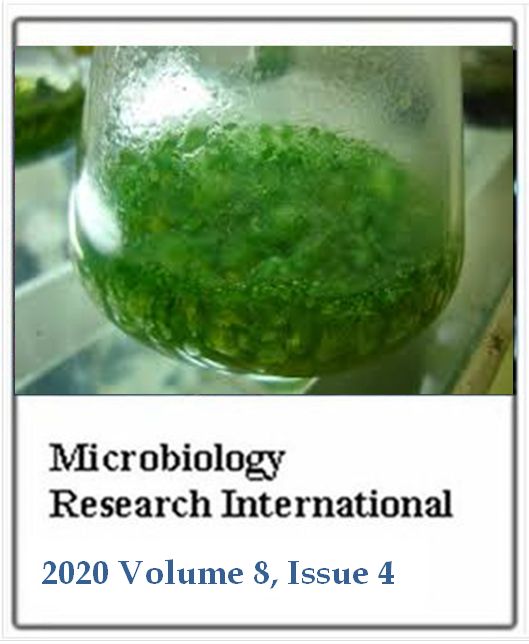Effect of sub-minimum inhibitory concentrations of biocides on the selective pressure towards antibiotic resistance of Staphylococcus aureus strains
Nadia Al-abdli, Amal Boulifa and Intissar TrabelsiMicrobiology Research International
Published: December 29 2020
Volume 8, Issue 4
Pages 76-82
Abstract
Increased resistance of bacteria to antiseptics and disinfectants is not yet a significant problem, the issue as to whether low-level resistance to these agents is a selection factor for antibiotic-resistant strains in the clinical and domestic environments has yet to be settled. All isolates of S. aureus strains isolated from different clinical specimens submitted to the Microbiology Laboratory at Aljala Hospital, Benghazi, Libya of July 2019 were submitted to antibacterial susceptibility test before and after were exposure sub-minimum inhibitory concentrations (sub-MIC) of two biocides (ethanol 96% and sterillium). The results showed the MIC of biocides used in this study were not similar between the parent and daughter strains of the examined isolates, that the use of biocides may exert increased selective pressure on bacteria to acquire antibiotic and biocide resistance. The results of S. aureus after exposure to sub-MIC of ethanol 96% showed a multiple resistance to Erythromycin, Clindamycin and Cotrimoxazole, also the pattern of resistance was differed toward Vancomycin, but was not observed resistance to antibiotics after exposure (sub-MIC) of sterillium. These results suggest that exposure to sub-inhibitory concentrations of ethanol may lead to an increased selective pressure towards antibiotic resistance, which is clinically important since these disinfectants are frequently used in Benghazi hospitals.
Keywords: Sub-minimum inhibitory, biocides, selection of antibiotic, Staphylococcus aureus.
Full Text PDF
